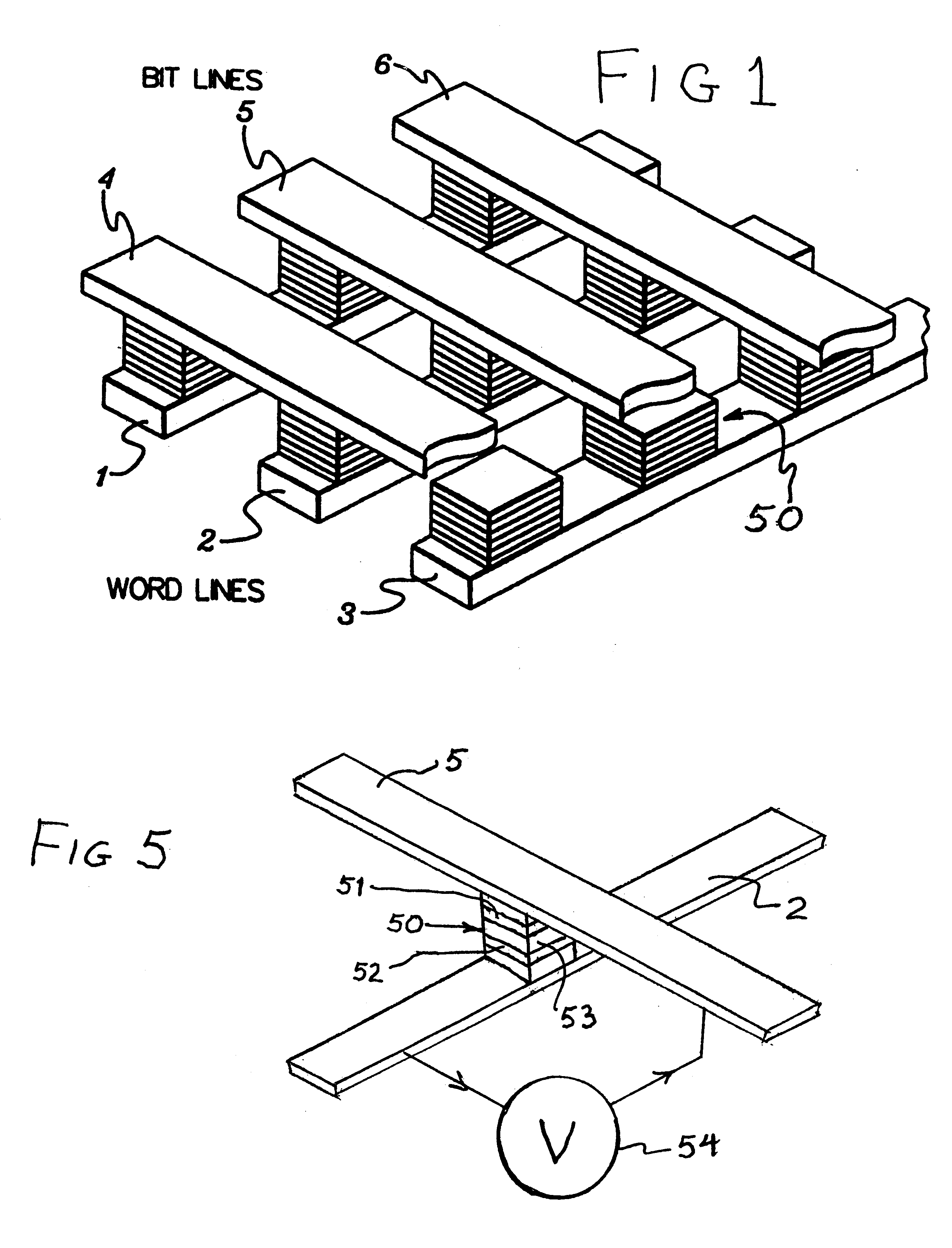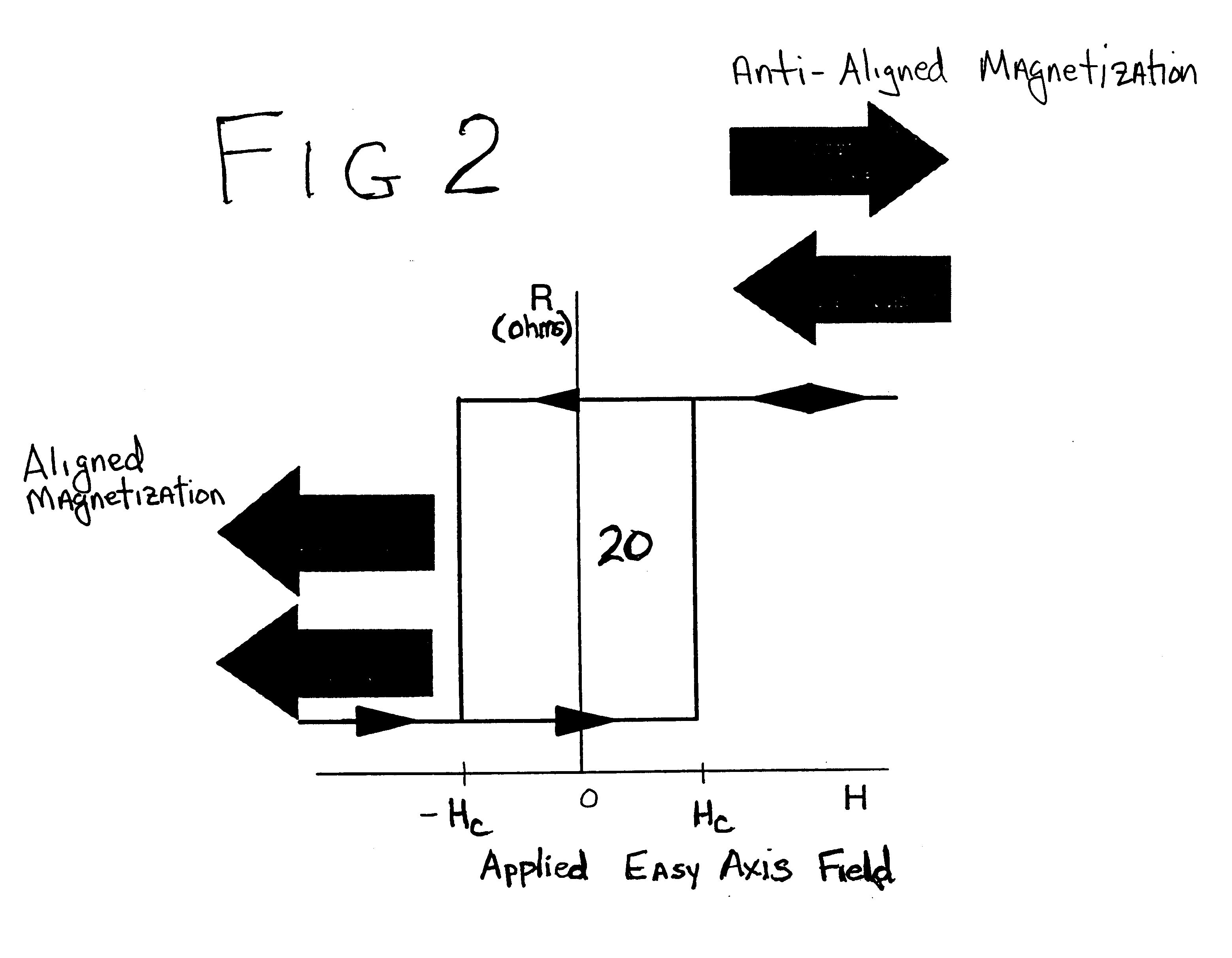Thermally-assisted magnetic random access memory (MRAM)
a magnetic random access and magnetic technology, applied in information storage, static storage, digital storage, etc., can solve the problems of high cost, high cost, and high cost, and achieve the effect of improving reliability and reducing costs
- Summary
- Abstract
- Description
- Claims
- Application Information
AI Technical Summary
Problems solved by technology
Method used
Image
Examples
first embodiment
Referring now to the drawings, and more particularly to FIG. 5, there is shown the present invention.
Generally, the preferred embodiment of the present invention provides a memory array utilizing a unique and unobvious magnetic tunnel junction (MTJ) storage cell design in which a cell may be selected by heating only the selected cell, thereby reducing cross-talk with adjacent cells, and improving the quality of the switching characteristics.
With reference to FIG. 1, an exemplary MRAM array includes a set of electrically conductive lines that function as parallel word lines 1, 2, and 3 in a horizontal plane, and a set of electrically conductive lines that function as parallel bit lines 4, 5, and 6 in another horizontal plane. The bit lines are oriented in a different direction (e.g., at right angles to the word lines), so that the two sets of lines intersect when viewed from above.
A memory cell 50, which is shown in greater detail in FIG. 5 below with regard to the present invention,...
PUM
 Login to View More
Login to View More Abstract
Description
Claims
Application Information
 Login to View More
Login to View More - R&D
- Intellectual Property
- Life Sciences
- Materials
- Tech Scout
- Unparalleled Data Quality
- Higher Quality Content
- 60% Fewer Hallucinations
Browse by: Latest US Patents, China's latest patents, Technical Efficacy Thesaurus, Application Domain, Technology Topic, Popular Technical Reports.
© 2025 PatSnap. All rights reserved.Legal|Privacy policy|Modern Slavery Act Transparency Statement|Sitemap|About US| Contact US: help@patsnap.com



